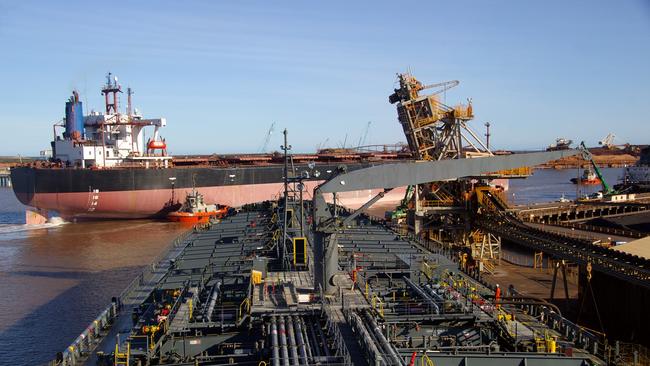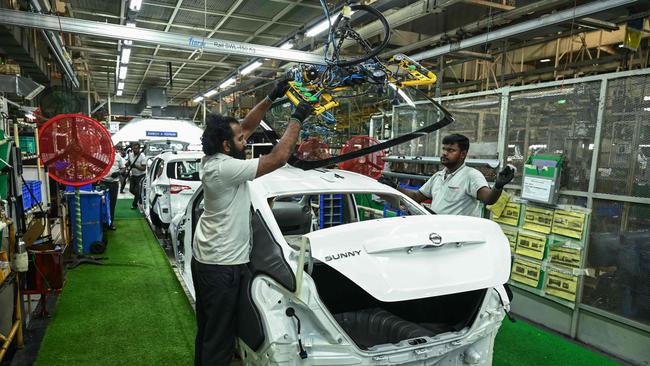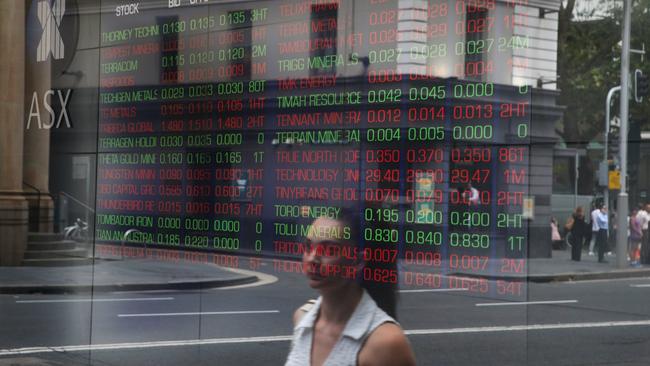Trump’s Liberation Day: See how it will impact Australians
Donald Trump’s much touted “Liberation Day” has arrived. See how his global tariffs announcement will impact you.
North America
Don't miss out on the headlines from North America. Followed categories will be added to My News.
US President Donald Trump has announced the full scope of his aggressive tariff program, dubbed “Liberation Day”.
Here’s what the new tariffs mean for the Australian economy and consumers.
WHAT IS THE TARIFF ON AUSTRALIAN GOODS?
Australian goods to the US are being slapped with a 10 per cent tariff. This is understood to be a flat tariff on all our goods into the country.
Mr Trump said every country that trades with the US will face a “minimum baseline tariff of 10 per cent”.
Until now, trade between the US and Australia was largely tariff-free due to the Australia-US Free Trade Agreement, signed in 2004.
Prime Minister Anthony Albanese has said “no one has got a better deal [than Australia] and people will see that themselves”.
WHAT IS A TARIFF?
A tariff is a tax placed on imports, meaning exports of affected goods from Australia to the US will become more expensive for consumers and likely reduce demand for them.
Tariffs are applied to companies who import foreign goods, and are typically imposed as a percentage of the product’s value. The goal of high tariffs can be to make importing goods untenable, increasing their price until domestic products are the most affordable option.
Reciprocal tariffs are a retaliation: if a country taxes imports from the US, Mr Trump intends to raise taxes on their exports.

This eye-for-an-eye approach is driven by the Trump Administration’s view that the US has been treated “unfairly” in international trade.
US Treasury Secretary Scott Bessent said in a Fox Business interview on March 18 that the Trump administration plans to impose tariffs on the 15 per cent of nations that account for the bulk of US trading volume while also imposing tariffs on US goods.
Some of the tariffs Mr Trump has already announced have kicked in. For example, a 25 per cent tariff on all steel and aluminium imports.
Mr Trump placed 25 per cent tariffs on most imports from Canada and Mexico earlier in his term but later exempted goods that fall under an existing trade agreement.
Mr Trump also imposed two sets of 10 per cent tariffs on goods from China.
WHAT ARE OTHER COUNTRIES GETTING?
China, Australia’s largest trading partner, will face a 34 per cent reciprocal tariff. This is in addition to the existing 20 per cent being charged to importers of goods from China, a White House official said.
Because an existing 25 per cent tariff is in place for Canadian and Mexican goods, the countries will not have a further 10 per cent baseline tariff imposed.
The European Union will face tariffs of 20 per cent, Indian goods will receive a 26 per cent tariff and Vietnam will be slugged with a tariff of 46 per cent.
New Zealand is being charged a 10 per cent tariff, as well as the United Kingdom.
WHAT IS PRESIDENT TRUMP’S ‘LIBERATION DAY’?
‘Liberation Day’ is the plan Mr Trump says will free the US from relying on foreign goods. White House press secretary Karoline Leavitt told reporters on Monday the president will announce a tariff plan that will “roll back the unfair trade practices that have been ripping off our country for decades”.

“This is the beginning of Liberation Day in America,” Mr Trump told reporters on Air Force One.
“We’re going to charge countries for doing business in our country and taking our jobs, taking our wealth, taking a lot of things that they’ve been taking over the years.”
WHEN WILL THEY TAKE EFFECT?
Tariffs on Australian goods will take effect midnight Saturday, April 5 in the US, 3pm AEDT, according to a White House press release.
Typically tariffs take longer to implement, but Mr Trump is invoking emergency economic powers to address what the Trump administration describes as “the absence of reciprocity in our trade relationships”.
“These tariffs will remain in effect until such a time as President Trump determines that the threat posed by the trade deficit and underlying non-reciprocal treatment is satisfied, resolved, or mitigated,” the White House said in a statement.
White House press secretary Karoline Leavitt on Tuesday claimed the tariffs would take effect immediately after they were unveiled.
CAN THE DECISION BE NEGOTIATED?
Asked whether there was anything global leaders could do to avoid sweeping new tariffs, Ms Leavitt said that Mr Trump was “always up” for a phone call or “good negotiation”.
“But he is very much focused on fixing the wrongs of the past and showing that American workers have a fair shake,” she added.
Ms Leavitt also said there had been “quite a few countries that have called the president and have called his team, in discussion about these tariffs”.
HAS THIS HAPPENED BEFORE?
Since WWII, the US has largely engaged in free trade and lower tariffs. Now that there’s been a loss in American manufacturing jobs, Mr Trump is hoping to bring those jobs back to the US.
During Mr Trump’s first term, he imposed heavy tariffs on solar panels, aluminium, steel and most goods from China. Yet, the number of jobs in the steel industry stagnated, unaffected by the tariffs.
Further, retaliatory taxes imposed by other nations on US goods had negative effects on the country.
WHY IS AUSTRALIA BEING INCLUDED?
Despite earlier indications that further tariffs would only be applied to countries the US runs a large trade deficit with, on Sunday Mr Trump told reporters they would be imposed on “all countries”.
The US in 2024 ran a trade surplus of $17.9 billion with Australia, meaning they export more to us than they import. To President Trump, this may appear to be a good thing – to Australia, they’re selling more than they’re buying.

Australia has a sweeping free trade agreement (FTA) with the US and imposes minimal tariffs on their exports.
Independent economist Saul Eslake said despite this, the US government might consider our GST (Goods and Services Tax) as a kind of tariff.
“Just because it’s ridiculous doesn’t mean Trump isn’t going to think it,” he said.
“They may want to ‘punish’ us because of our PBS (Pharmaceutical Benefits Scheme), which buys drugs off US drug producers at lower prices than if we all bought them individually”
Mr Eslake also said the Australian government’s News Media Bargaining Code, which forces social media giants to pay publishers for journalism on their platform, could be a factor in provoking tariffs.
“The FTA we have with the US is not worth the paper it’s written on as far as Trump is concerned. Under our FTA, none of this should be happening but it is.”
HOW WILL AUSTRALIA BE IMPACTED?
The impact on Aussies is hard to predict, and largely depends on how our own government and other countries react to further tariffs.
Mr Eslake said as an economy, “the direct impact on us will be relatively small because the US only takes about 4.5 per cent of our exports”.

“The indirect impact, in particular via China, could be much more significant,” he said.
China is more than 32 per cent of Australia’s export market.
“Quite a bit of that is used by China to make things that they in turn sell to the US,” Mr Eslake said.
If US tariffs on China lower their demand for Australian exports, Mr Eslake said that “could have a bigger negative impact on our economy”.
Even if our overall economy is resilient against the shock of US tariffs, individual industries may face challenges.
But Trade Minister Don Farrell privately briefed Australian trade groups to brace for 20 per cent tariffs across the board.
Mr Farrell said he was “pessimistic” about any relief for Australia revealing he had rejected a counter offer from Washington during early negotiations.
WHAT WILL BE THE IMPACT ON MEAT?
The meat industry will be profoundly affected by any tariffs from the US.
The majority of Australian meat is produced for export, employing more than 400,000 people across the industry. In 2023, Australia exported almost $3.9 billion worth of meat to the US.
Since June 2023, the United States has overtaken China as our largest meat export market.
If US demand for Australian meat evaporates, Australia’s meat industry will face serious challenges.
Australian Meat Industry Council chief executive Tim Ryan has said the supply chain is “well-positioned to respond to shifts in the international trade landscape”.
“With strong demand in the US and globally for Australian meat, the American people will be the ones to wear the cost of any tariffs applied to our exports,” he said.

The impact on meat prices for Australian consumers, however, is hard to predict.
“Possibly we will be able to sell it somewhere else,” Mr Eslake said. If Australian meat is able to find a home in other foreign markets, prices and the industry could be resilient to shocks as was seen with Australian barley and coal when China imposed tariffs in 2020.
“We might just get cheaper meat here at home,” he said, as increased supply could be redirected to the domestic market.
WHAT WILL BE THE IMPACT ON DRUGS?
US pharmaceutical representatives have lobbied Mr Trump to target Australia with drug tariffs due to the “damaging pricing policies” of subsidised medicines on the PBS.
“Egregious and discriminatory pricing policies in several markets, including Canada, Japan and Korea, continue to undervalue American innovation, threaten billions of dollars in lost sales and put American competitiveness, jobs and exports at risk,” said the submission from the Pharmaceutical Research and Manufacturers of America.

US tariffs on imports of Australian drugs would likely reduce demand for Australian products, making them more expensive to produce domestically.
However, the larger danger for Australian consumer prices is if the US targets their exports.
Pharmaceutical and medical exports from Australia to the US in 2023 were about $1.6 billion, while our imports were $3.29 billion.
Tariffs are imposed on imports rather than exports, so tariffs from the US are unlikely to impact the prices of American drugs imported to Australia.
The majority of drugs imported to Australia are sourced from cheaper markets including India and China rather than the US, tempering the impact of tariffs on Aussie prices.
WHAT WILL BE THE IMPACT ON CARS?
Mr Trump has already announced a 25 per cent tariff on cars and auto parts. The car tariffs are set to go into effect April 3 and those on auto parts by May 3. After this was announced, General Motors and Ford Motor stocks both fell, to 6.3 per cent and 2.8 per cent, respectively.
These tariffs look to benefit auto manufacturers that are assembled in the US, such as Tesla which performs 100 per cent of its car models in the country.
Almost half of new vehicles sold in the US in 2024 were assembled outside the country, according to the S & P Global Mobility.

Australia does not have a major car manufacturing industry due to high production costs and a comparatively small domestic market. Exports of cars and auto parts are therefore a minor part of our economy.
Australian car exports to the US in 2023 were about $3 million, less than 2.5 per cent of our total car exports.
For consumers, Mr Eslake said, this may mean that Australia becomes a more attractive market for international manufacturers to sell cars.
“There is a possibility that if the Chinese, for example, can’t sell as many cars to the US, they might seek to sell those things more cheaply here rather than not sell them at all,” he said.
HOW WILL THIS AFFECT THE STOCK MARKET?
Global stock markets fell on Thursday morning as businesses and investors deal with the impact of higher trade costs.
Mr Eslake said “the main losers from any tariffs are American consumers who will be faced with higher prices, not just for American imports but for American products that compete with those imports”.

Goldman Sachs has raised the probability of a US recession in the next 12 months up to 35 per cent, where it was previously 20 per cent.
In response to market volatility, the price of gold has surged.
HOW WILL THIS AFFECT THE FEDERAL ELECTION?
Mr Albanese told reporters on Tuesday that Australia is not up for negotiation on bending its rules on biosecurity. He maintains Australia will not weaken its laws to please the US.
Opposition leader Peter Dutton has said he agrees with the PM and will “stand up for our country’s interests every day if I am given the great honour of being prime minister”.
Despite this, Mr Dutton has continued to disagree with the PM’s handling of Mr Trump. He has said he believes the PM should stand up to Mr Trump and has said he could strike a better deal if elected.
Mr Albanese and Mr Dutton continue to face off in who would be better equipped to stand up to Mr Trump.
More Coverage
Originally published as Trump’s Liberation Day: See how it will impact Australians




